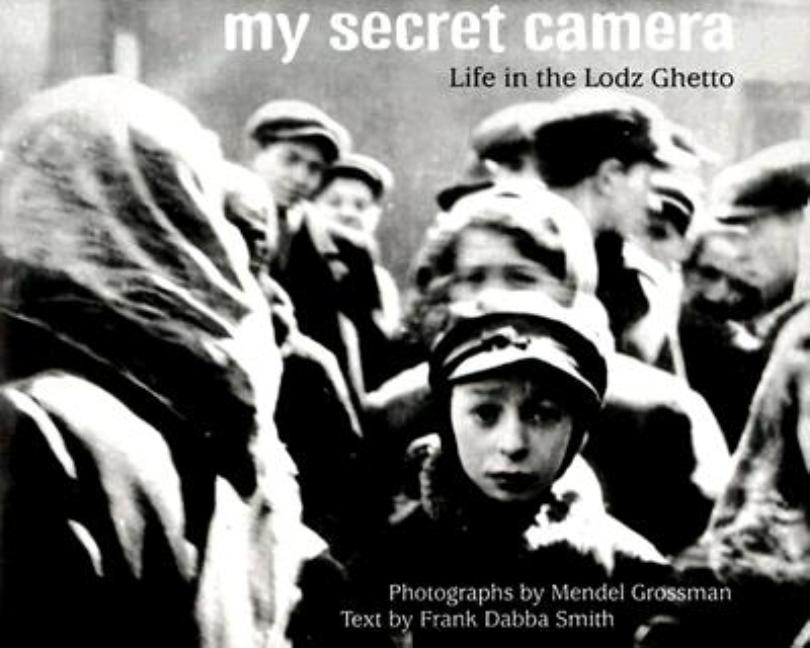Book Descriptions
for My Secret Camera by Frank Dabba Smith and Mendel Grossman
From Cooperative Children's Book Center (CCBC)
Grossman’s photographs prove that “a single image plucked from the chaos of history can move us to understanding no less than to compassion; that beauty is never absent from human beings, even at the worst of times; and that such beauty is not wasted on us.” These words by Howard Jacobson introduce an arrangement of black and white photographs of individuals imprisoned in Poland’s Lodz Ghetto from 1940 to 1944. A spare text, written as if the photographer is speaking, accompanies the photos. Mendel Grossman took his photographs using a camera hidden inside his raincoat. His official job in the photographic lab of the ghetto administration involved printing photographs of Jewish workers for identification cards and of other subjects for propaganda purposes. At night, he secretly developed his own pictures. The negatives were hidden, then located after World War II ended in Europe. “These studies do break the heart. God help us if there is ever a time when they do not break the heart,” writes Jacobson in the introduction. “But they may strengthen the heart, too . . . because they show the victimized finding reason to laugh and joke, finding community, and purpose, even in circumstances you would think too horrible to bear.” This handsomely designed book is a tribute to all pictured within it and to the millions of others who perished--as did Grossman--during the Holocaust. (Age 11 and older)
CCBC Choices 2001. © Cooperative Children's Book Center, Univ. of Wisconsin - Madison, 2001. Used with permission.
From the Publisher
Mendel Grossman, one of the many Jews imprisoned in the Lodz Ghetto during World War II, was driven by a passion to bear witness to the human suffering that was going on around him. He secretly photographed people and events in the ghetto, leaving a historical record. In this photographic information book, the reader is taken on a journey with Grossman and his camera. The text emphasizes hope for the future, rather than the suffering of the past.
Publisher description retrieved from Google Books.


